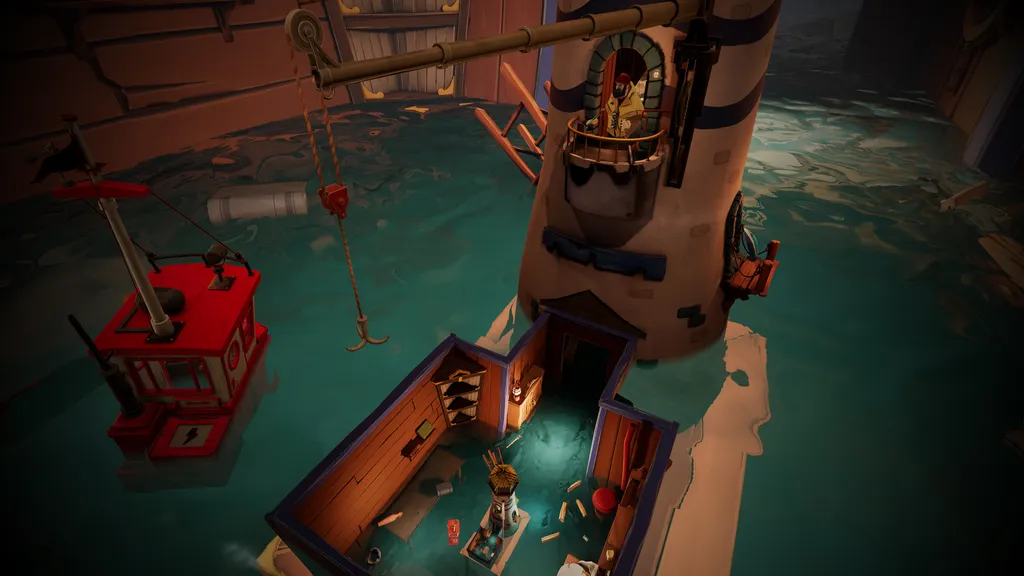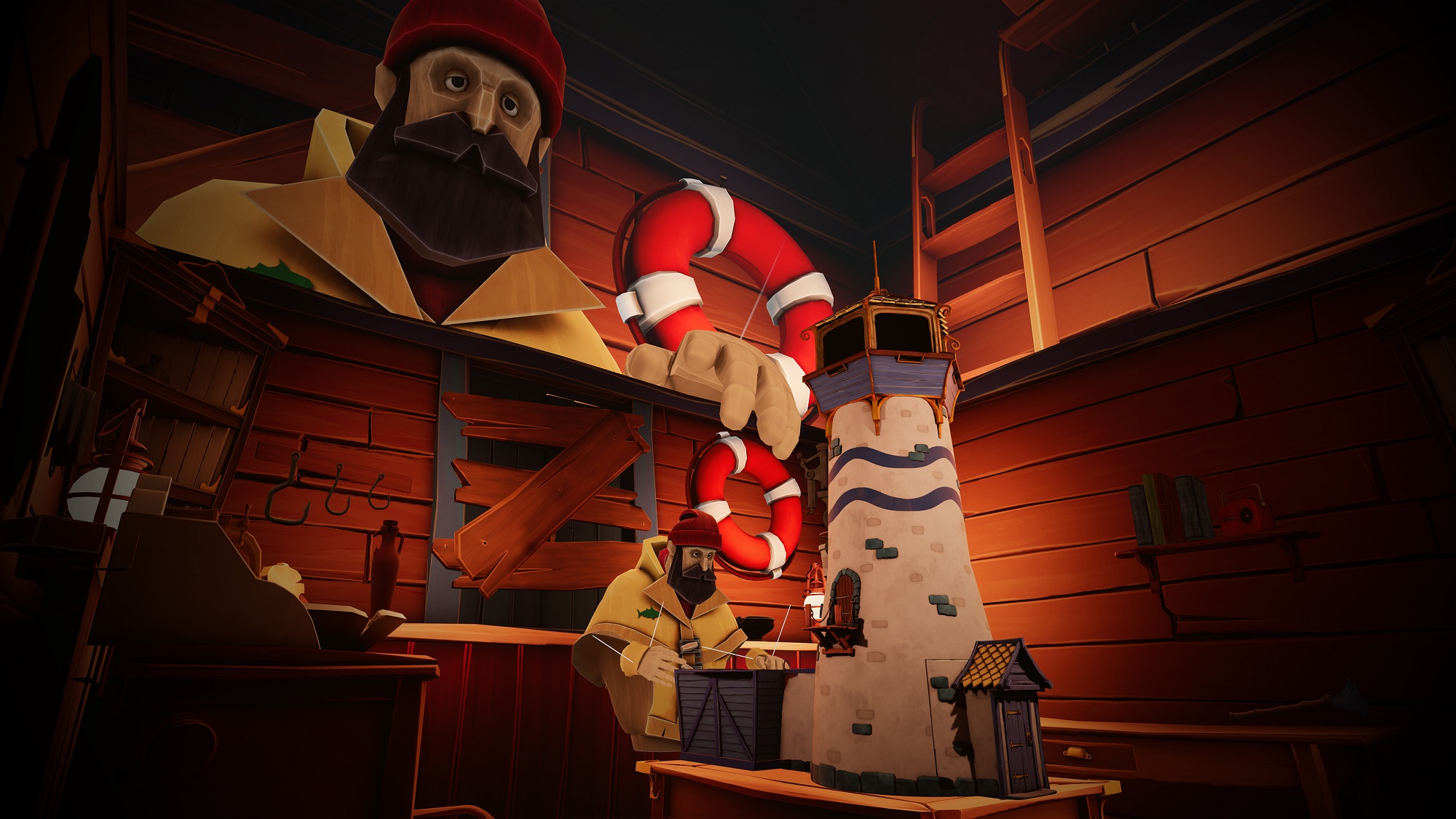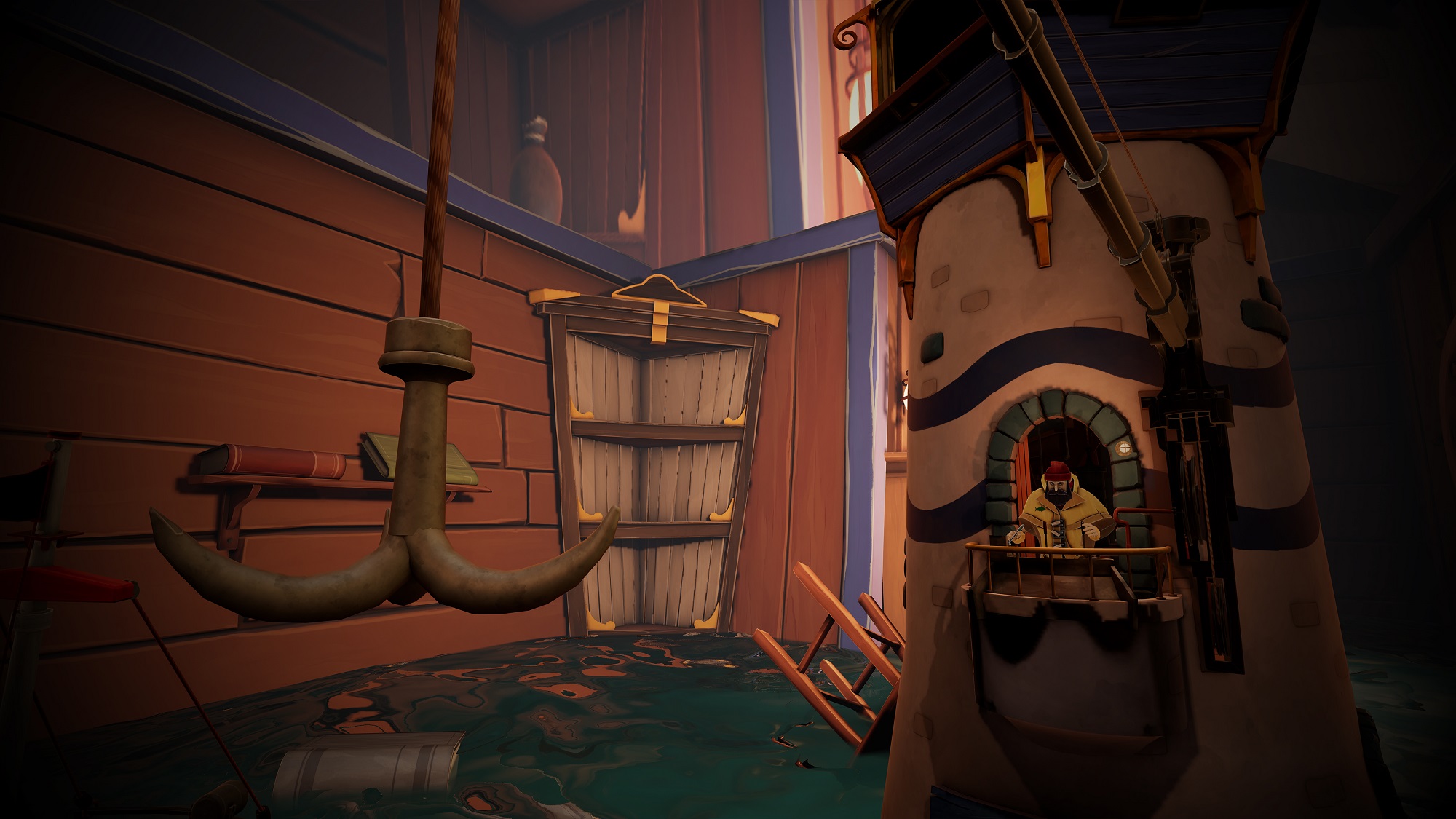I would have never pegged Innerspace as the one to crack the code. True, the Firebird series is a compelling exhibition of VR art, but who’d have bet on this small indie studio as the first to unify VR’s core pillars? To bring inventive, platform-driven gameplay, medium-rooted narrative and, above all else, arresting immersion all under one roof? Certainly not me, and yet A Fisherman’s Tale is exactly that.
Note: This review is for the PC VR and PSVR version of the game. For specific impressions about the new Quest port, head here.
It’s a puzzle game, first and foremost, but not the kind that should repel lighter thinkers like myself. You play as a puppet, cozily confined to his lighthouse home. In the middle of your modest cabin sits a small model of your abode. Peer inside and, amazingly, you’ll see a smaller version of yourself matching your every move. Open a window and, sure enough, you’ll find yourself sitting in the middle of a larger version of your surroundings.
Amazement ensues; try poking yourself from above with a giant finger, picking up objects from inside your model to bring into the world around you, or even throwing cups and lamps inside to make bigger versions of them. It all clicks. Innerspace bottles that raw disbelief you felt when you first put on a headset and realized that, against all odds, this works. But, crucially, A Fisherman’s Tale is no mere tech demo. It’s the real deal.
Each of the four levels unlocks a new area of the lighthouse. Each of those comes with its own twist on that central innovation. This isn’t simply swapping tiles and pushing buttons in order; it’s genuinely stimulating puzzling. Early levels have you bending your brain to the breaking point as you reason your way through the model paradox. At one point you turn a hefty obstacle into a level-progressing key. Later on, you repurpose some seemingly useless furniture to reveal hidden secrets. Oh, and then you turn a fish into a taxi service. Brilliant!
This is the kind of reality-defying gameplay that thrives in this medium. Better yet, there aren’t any unwelcome progression bumps. Each level gives you pause for thought but can be overcome without frustration. There also isn’t any half-hearted attempt wearing the invention thin; just before you might think you’ve seen all of the game’s tricks, it pulls something new on you.
All of that alone would make A Fisherman’s Tale a must-see. But there’s also a core design philosophy that’s kept VR at the heart throughout. It helps it excel far beyond its brain-teasers.
Though the tone is often light, the game’s themes are anything but. The model puzzles soon reveal themselves as a microcosm for wider topics about lineage and institutionalization and the metaphors don’t stop there. This is a game about a lost and beleaguered fisherman, don’t forget. But its dramatic heights are well-told and memorable. It favors a welcome subtlety and ambiguity in its story-telling that steers clear of the obvious cliches. You could even find something to relate to in the exploration of self-incarceration that’s fuelled by words of wisdom from unexpected allies.
If anything, it’s warmer than you’d expect with poetic narration that’s got a portion of its tongue in cheek. You might be surprised at just how aware of itself it really is.
And then there’s the surface-level dressing, which is never anything short of delightful. There’s something wholesomely authentic to A Fisherman’s Tale’s hand-crafted world. Each room of the lighthouse feels lived-in and homely, but at the same time cramped and recluded. It’s like you’re living in the world’s comfiest dungeon.
That’s probably why you’re on strings. And yet, there’s something so very fitting about the idea of stepping into the role of a surrogate in VR. Not to mention there’s actual use for it too. You can easily grab out of reach objects by extending the puppet’s hand forward, for example. It’s a neat perk of a strange existence.
A shame, then, to have to bring up that most trivial of VR criticisms; there simply isn’t that much of it. It took me two hours to see through all of A Fisherman’s Tale and, as fresh as it remained throughout, I can’t help but wish its mechanics could live on in something meatier. I’d have happily spent another few hours experimenting with its fascinating rule set.
From slow-motion shootouts to trips across the universe and stories of loved ones lost, VR has already proven that each of its core design tenants can be tamed. But A Fisherman’s Tale might be the first to achieve a perfect storm of gameplay, immersion and narrative in a single experience. Though brief, it fuses experience and interactivity to really show what this medium is capable of. This is exactly what old seadogs aren’t meant to be capable of; something genuinely new.
A Fisherman’s Tale is available now on Oculus Rift, HTC Vive, Windows VR and PlayStation VR for $14.99. Read our Game Review Guidelines for more information on how we arrived at this score.

























